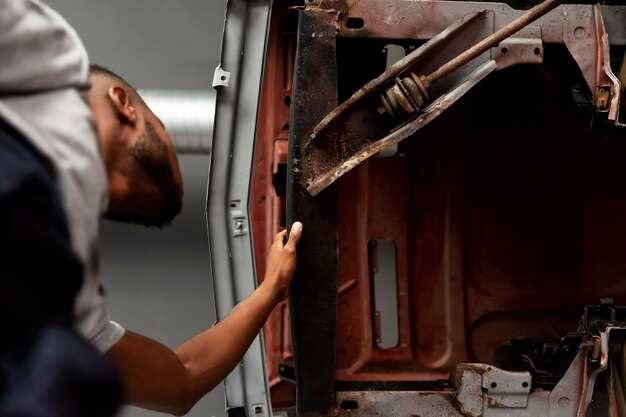
For enthusiasts of older Land Cruisers, the experience of driving is often as much about the journey as it is about the vehicle itself. However, one common issue faced by owners of these classic models is excessive cabin noise. Soundproofing your Land Cruiser can transform your driving experience, allowing you to enjoy the engine’s purr and your favorite tunes without the intrusion of road noise or vibrations.
Sound deadening installation is not just a luxury; it is a practical enhancement that can improve comfort and overall driving experience. By installing sound deadening materials, you can effectively reduce unwanted noise from the exterior environment, thus creating a quieter and more serene cabin. This article will guide you through the process of sound deadening installation, covering the necessary materials, tools, and techniques specifically suited for older Land Cruisers.
The benefits of soundproofing go beyond mere comfort. A well-insulated cabin can also enhance the longevity of your vehicle’s interior components by minimizing vibrations and potential wear. Additionally, a quieter ride can improve concentration and communication among passengers, making longer journeys more enjoyable. Whether you are a seasoned mechanic or a beginner looking to enhance your classic ride, understanding the fundamentals of sound deadening is essential for maximizing the performance of your Land Cruiser.
Choosing the Right Materials for Soundproofing

Effective soundproofing in older Land Cruisers begins with selecting the right materials that will significantly reduce noise intrusion while enhancing comfort. The primary goal is to create a barrier that minimizes vibrations and absorbs sound, leading to a quieter cabin experience.
One of the most popular materials for soundproofing is mass loaded vinyl (MLV). MLV is dense and heavy, making it an excellent choice for blocking sound transmission. It can be installed on floors, walls, and ceilings, providing an effective barrier against noise. When used in conjunction with other materials, it helps to maximize soundproofing effects.
Another essential material is acoustic foam, which is designed to absorb sound waves. This lightweight option can be installed in the roof lining and door panels to help diminish echo and reverberation inside the vehicle. The open-cell structure of acoustic foam traps sound, preventing it from bouncing back into the cabin.
Vibration dampening mats, such as butyl rubber sheets, are equally crucial for soundproofing. These mats reduce vibrations caused by the engine and road noise, which can otherwise transmit through metal surfaces into the cabin. Installing these mats on the floor, under the hood, and along the inner walls significantly improves the overall sound isolation.
Fiberglass insulation is another excellent choice for soundproofing, particularly when added to door panels and within the roof. It offers exceptional sound absorption properties and helps insulate against both noise and temperature fluctuations.
Choosing the right combination of these materials is vital for achieving optimal soundproofing results. By considering the specific areas of your Land Cruiser where noise penetrates the most and applying a mix of mass loaded vinyl, acoustic foam, vibration dampening mats, and fiberglass insulation, you will create an effective sound barrier that enhances your driving experience.
Step-by-Step Guide to Installing Sound Deadening Mats

Installing sound deadening mats in your older Land Cruiser can greatly enhance the driving experience by reducing road noise and vibrations. Follow this detailed guide to ensure effective application.
Step 1: Gather Your Materials
Before you begin, collect all necessary tools and materials. You will need sound deadening mats, a utility knife or scissors, a roller or flat object for installation, and a cleaner to prep the interior surfaces.
Step 2: Clean the Interior Surfaces
Thoroughly clean the areas where you intend to apply the mats. Remove any dirt, grease, or grime using a suitable cleaner. This will help the mats adhere better and increase their effectiveness.
Step 3: Remove Interior Components
For a proper installation, take out seats, floor carpets, and any other components that may obstruct your access to the bare metal of the interior. Carefully document where each part belongs to ensure a smooth reinstallation process.
Step 4: Measure and Cut Mats
Measure the areas where you plan to install the sound deadening mats. Cut the mats to size using your utility knife or scissors. Aim for precise cuts to maximize coverage and minimize waste. Ensure that pieces fit snugly without gaps.
Step 5: Apply Mats to the Floor
Begin laying down the mats on the floor area. Start from one corner and work your way across. Remove the adhesive backing, if applicable, and press the mats firmly into place. Use a roller or flat object to ensure a strong bond and eliminate any air bubbles.
Step 6: Cover Other Areas
Continue applying sound deadening mats to other areas, such as the door panels, wheel wells, and trunk. These locations are crucial for reducing noise. Make sure to overlap seams where necessary for optimal sound isolation.
Step 7: Reinstall Interior Components
Once all mats are securely in place, begin reassembling your vehicle’s interior. Start with the components you removed initially, ensuring every part is correctly positioned and secured.
Step 8: Test the Results
After everything is reinstalled, take your Land Cruiser for a test drive. Pay attention to the sound levels and overall comfort to assess the effectiveness of your sound deadening installation. Adjust any remaining areas as needed for further improvement.
By following these steps, you can significantly enhance the sound quality of your older Land Cruiser, making every drive more enjoyable and quieter.
Common Mistakes to Avoid During Soundproofing Process
When undertaking the sound deadening installation for older Land Cruisers, several common mistakes can hinder the effectiveness of your efforts and lead to disappointing results. Understanding these pitfalls will help in achieving a quieter and more comfortable interior.
1. Inadequate Surface Preparation: One of the most frequent mistakes is failing to properly clean and prepare the surfaces before applying soundproofing materials. Dirt, grime, and old adhesive can prevent the material from adhering effectively, reducing its sound-dampening properties. Always ensure that the interior surfaces are cleaned thoroughly with an appropriate cleaner.
2. Uneven Application: Applying sound deadening materials unevenly can create gaps that allow sound to penetrate. It’s essential to apply the materials in overlapping layers, ensuring complete coverage across the interior surfaces. Avoid rushing this process to ensure even distribution.
3. Overlooking Critical Areas: Many installers neglect to apply soundproofing in areas that significantly contribute to noise, such as wheel wells, under the hood, and around doors. Make a checklist of all areas that should receive treatment to ensure nothing is overlooked.
4. Using Incompatible Materials: Not all soundproofing materials are suitable for every application. Using materials that are not designed for automotive use could lead to degradation over time or may not provide the desired effects. Always choose high-quality products specifically intended for vehicle interiors.
5. Ignoring Weight Considerations: While enhancing sound insulation is crucial, it’s also important to consider the weight being added to your vehicle. Excessively heavy materials can affect performance and fuel efficiency. Aim for a balance between sound deadening and weight to maintain the driving experience of your Land Cruiser.
6. Skipping Sound Test: After the installation, some individuals fail to perform a sound test to evaluate the effectiveness of the soundproofing. Ensure to test the interior for noise levels before and after installation to identify any areas that may need additional treatment.
By avoiding these common mistakes, you can enhance the overall experience of your older Land Cruiser, making the interior a quieter and more enjoyable environment for both driver and passengers.
